“The only thing that’s constant is change.” Philosopher Heraclitus likely had no idea that his paraphrased words would carry weight in the business world 2,500 years later. But here we are.
Whether scaling headcount, switching to remote work, or wondering how to incorporate AI into your workflows, the need for change is real and continuous.
But every transformation needs a steady hand — someone translating raw ambition into action, and action into impact. This guide explores who these change agents are, how they work, and how to use monday service to set them up for success.
Try monday serviceKey takeaways
- Change agents are the people behind progress, guiding teams, removing roadblocks, and turning strategy into execution across people, processes, and structure.
- There’s no one-size-fits-all change agent. They can be internal or external, tactical or strategic. What matters most is their ability to influence and align teams around a shared goal.
- Successful change depends on prep work, training, communication, feedback, and follow-through, which are all critical to making change stick beyond your launch date.
- IT teams rely on change agents to roll out new tools, connect systems, and drive adoption without disruption.
- monday service provides a strategic and collaborative space for change agents to come together. From customizable workflows to real-time dashboards and AI-powered assistance, monday service gives change agents everything they need to manage complex transformation, from start to finish.
What is a change agent in business?
A change agent, also known as an agent of change or change advocate, is someone who guides and champions any type of change in an organization so the “new normal” is a resounding success.
Typically, change agents are brought in to support with:
- People-focused change: Helping employees adapt to new roles, technologies, or ways of working
- Structural or organizational change: Navigating shifts in hierarchy, including new team structures or leadership models
- Internal process change: Improving or replacing workflows and tools, so the right processes are in place to support business goals.
The need for change agents has never been greater. A survey of 700 leaders at large organizations found that before 2020, most handled about 2 major change events per year. Today, that number has jumped to 9, with many managing several overlapping initiatives at a time. But volume doesn’t guarantee success. Research shows that roughly 70% of major transformations fail, often due to a lack of prep work.
Change agents are the saviors who work across all levels of the business to transform strategy into action, ensuring your change efforts are sustainable.
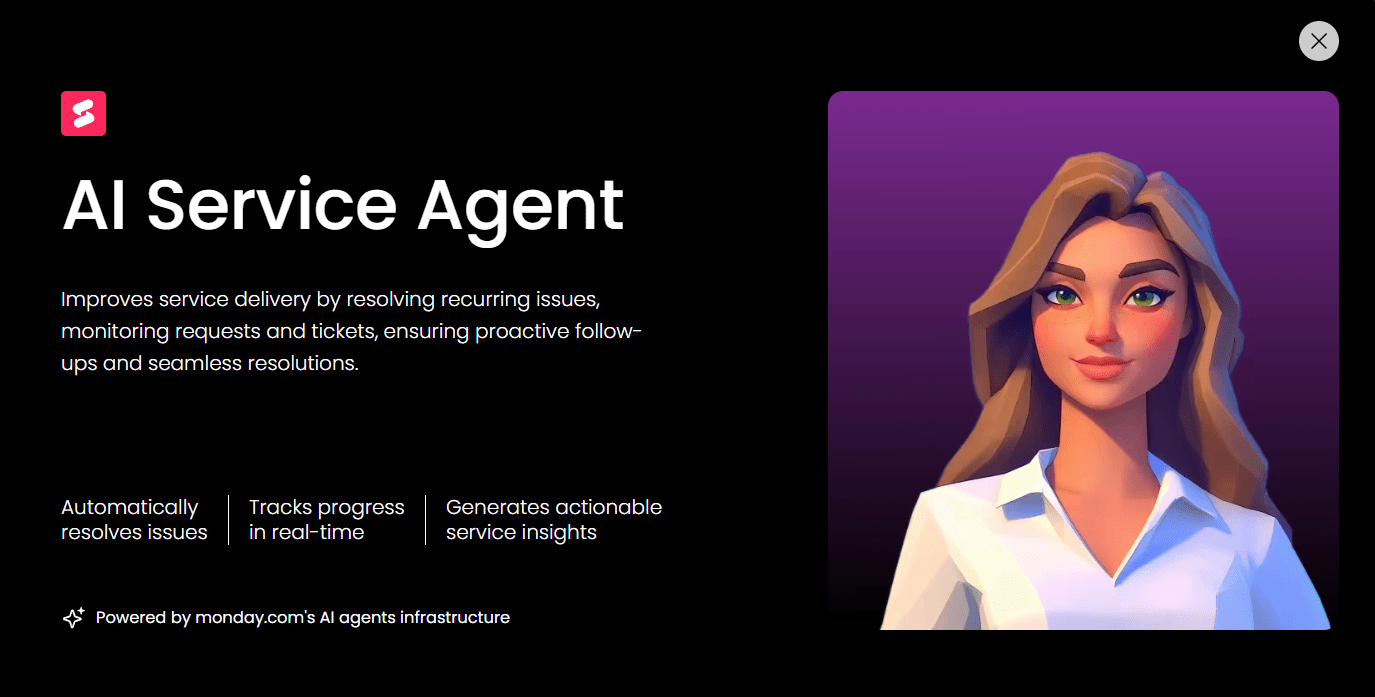
What are different types of change agents?
Change agents come in different shapes and sizes, and from a variety of sources, too.
Internal change agents
Internal change agents are employees who live and breathe the organization. They might be department leads, project managers, service desk directors, or even high-performing team members who step up during moments of change. As they’re already embedded in the company’s culture and workflows, they have an insider’s perspective on what’s working, what’s broken, and where resistance might pop up.
They also bring existing trust and relationships to the table, which can make it easier to influence peers and champion change in a way that feels grounded and authentic. These are the people who know how to “read the room” and can tailor their approach based on the organization’s unspoken norms and nuances.
External change agents
External change agents are brought in from outside the business; typically consultants, transformation specialists, or strategic advisors. They have a fresh perspective, along with deep experience from working across industries and organizations. Because they’re not tied to internal politics or legacy systems, they can challenge assumptions, ask hard questions, and push the organization beyond business-as-usual thinking.
These external experts are especially helpful when the company needs an objective point of view, a proven framework, or specialized skills that don’t exist in-house. While they may need more time to build trust, external change agents often act as catalysts for bold, organization-wide shifts that might be harder to drive from the inside.
What are the roles and responsibilities of a change agent?
A change agent has a blend of roles, skill sets, and responsibilities that shift depending on the situation. They don’t have to be experts in every area, but the more of these responsibilities they’re comfortable owning, the more effective they’ll be at helping change take root. Here are some of the most common roles they take on.
- Leader: A change agent inspires action and sets the tone for what’s ahead. They help define the vision and rally teams around a shared goal, even when the path forward is uncertain. Whether part of the leadership team or not, they influence outcomes by modeling the mindset and behaviors they want others to adopt.
- Consultant: This type of agent evaluates what’s happening on the ground and offers guidance based on best practices and lived experience. By asking smart questions, internal or external change agents can identify gaps and help teams solve complex problems tied to the change.
- Communicator: Change agents translate strategy into something people can connect with. Think of them as the bridge between leadership and teams, providing regular updates and maintaining transparency throughout the process.
- Trainer: Teaching is a big part of driving adoption. Change agents often design workshops or offer one-on-one support to help employees feel more confident using new tools or following new processes.
- Researcher: Before recommending or implementing anything, change agents need to understand the current state of play. They review data and feedback, which helps them adapt their approach and make evidence-based decisions that stick.
- Integrator: A good change agent connects the dots across departments, tools, and timelines so that the change fits seamlessly into broader operations and doesn’t become “just another initiative.”
What skills and characteristics do change agents need?
Successful change agents rely on a distinct mix of skills and instincts that help them drive progress without leaving people behind. Here are the key qualities that set effective change agents apart:
- Vision: Change agents see beyond the day-to-day. They understand where the organization is headed and why the change matters operationally and strategically. Using this big-picture thinking, they anchor decisions in long-term goals rather than short-term discomfort.
- Leadership: You don’t need a corner office to lead change. Great change agents take initiative, inspire confidence, and influence outcomes, often without formal authority. They lead by doing, listening, and staying calm under pressure.
- Project management: Change rarely happens in a straight line. Strong planning, prioritization, and follow-through keep change efforts on track. Change agents often coordinate cross-functional teams, track progress, manage risks, and pivot as needed.
- Emotional intelligence: Change is as emotional as it is logistical. Being able to empathize with different perspectives and respond with care is key to building trust. People follow change agents not just because they’re smart, but because they’re human.
- Communication skills: Change agents are expert translators. They break down complex ideas into messages that resonate across levels of the organization. Whether delivering updates, running training, or addressing concerns, they know when to talk and when to listen.
- Adaptability: No change initiative goes exactly to plan. The best change agents course-correct in real time and remain resourceful when the unexpected happens. Flexibility is one of their greatest strengths.
- Credibility: Change agents don’t need to know everything, but they do need to be trusted. Whether through subject matter expertise or strong relationships, they earn the confidence of those around them, which opens some important doors.
- Collaboration: Change agents are natural connectors who bring the right people together to build alignment across teams and departments.
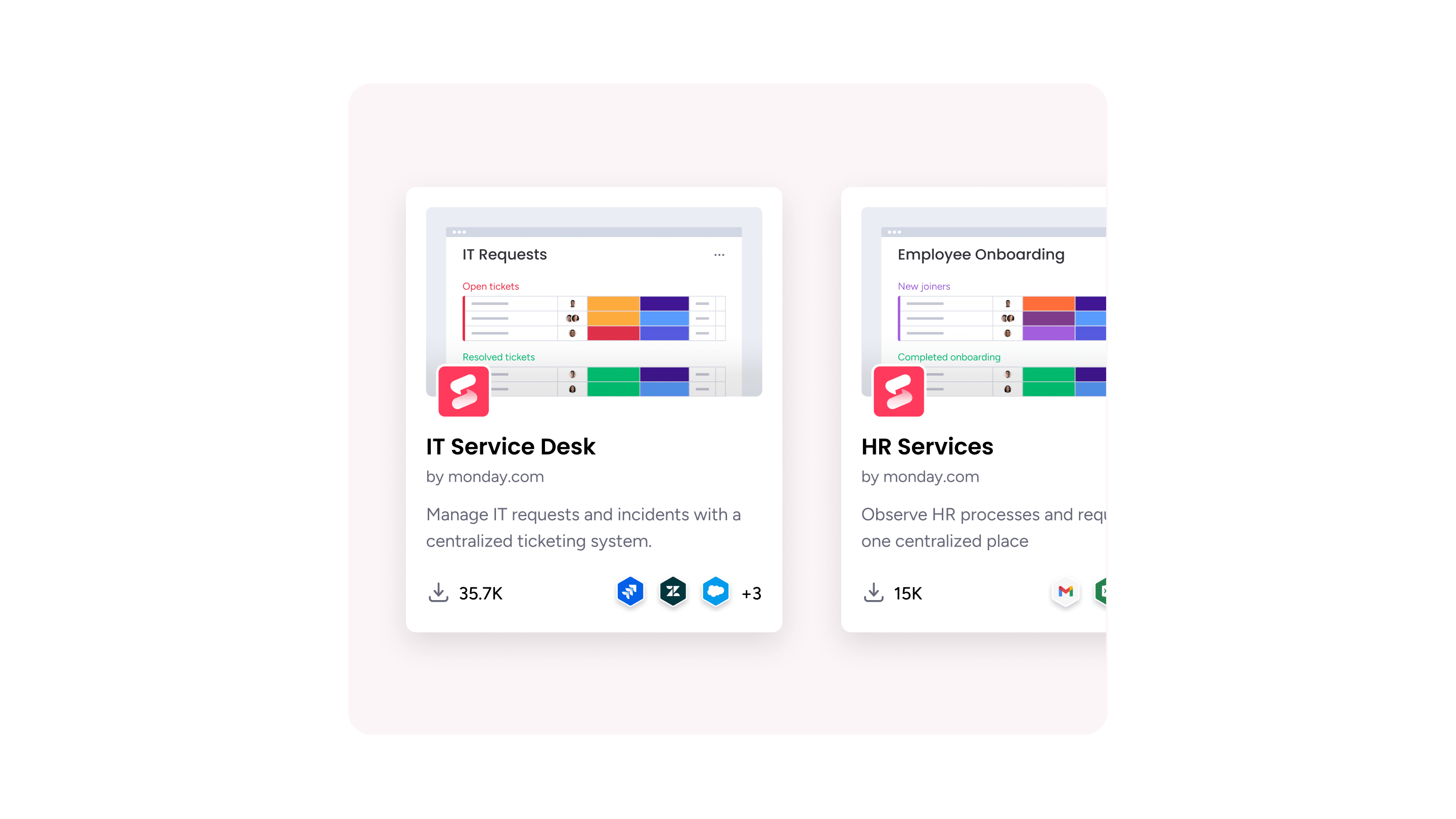
Change agent vs. change leader vs. change champion: What's the difference?
Each of the following roles plays its part in making change happen. Think of it like this: change leaders set the vision, change agents guide the execution, and change champions bring everyone else along for the ride.
Here’s a more detailed breakdown, so you can build a truly powerful support system for your next change initiative.
| Change agent | Change leader | Change champion | |
|---|---|---|---|
| Core focus | Executes and enables change across teams | Defines the strategy and direction | Advocates for change within their peer group |
| Typical role | Internal employee or external consultant | Senior executive, department head, or team lead | Influential individual contributor |
| Primary tasks | Drive adoption, remove roadblocks, support execution | Align stakeholders and provide resources | Encourage buy-in, collect stakeholder feedback |
| Key strength | Communication, problem-solving, adaptability | Vision-setting, decision-making, leadership | Peer influence, energy, trust within the team |
| Levels of influence | Mid to high (depends on scope of change) | High (formal authority and ownership) | Local or team-level (informal but impactful) |
What is the role of change agents in IT?
IT change agents play a critical role in organizations where transformation never really hits pause. According to the monday.com world of work report, the tech sector saw the most significant shifts in 2024-2025:
- 67% of tech employees reported changes to their teams
- 68% experienced changes to their job responsibilities
- 77% reported changes to the tools and software they use
That’s a lot of change in a short amount of time. And yet, only 45% of tech workers said those changes had been managed “very well.”
IT change agents, including IT directors, service desk leads, and implementation specialists, can bridge the gap between strategy and execution. They translate digital transformation goals into reality by:
- Supporting team adoption of new tools and systems
- Coordinating cross-department workflows during implementation
- Explaining how technical changes will benefit the organization’s end users
- Troubleshooting process breakdowns before they derail larger initiatives
To achieve all of this, IT change agents need the right systems to manage complexity, align teams, and move fast. That’s where monday service comes in.
Implement your change agent strategy in monday service
As change agents know well, transformation depends on the perfect blend of mindset and quality technology. monday service empowers IT change agents by connecting every aspect of a change initiative in one customizable platform. Here’s how monday service makes it easier to plan, launch, and sustain change at scale.
Coordinate every moving part with centralized ticketing and workflows
Change agents often manage a mix of access requests and workflow follow-ups, especially when managing new technology rollouts. With monday service, they can track change-related requests, monitor project progress, and keep stakeholders aligned in one place. Everything lives in context, so nothing gets lost, and the path from rollout to adoption stays clear.
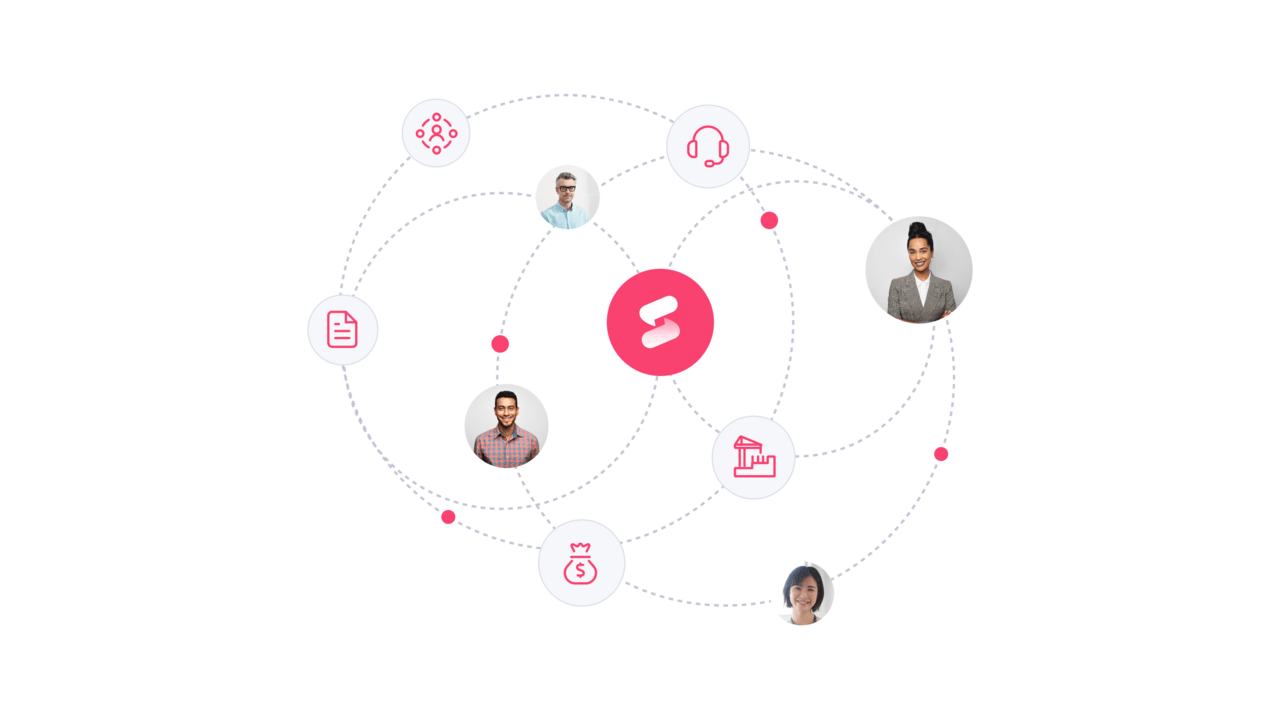
Eliminate manual work with no-code automations
Follow-ups and reminder notifications are part and parcel of any change initiative, but they’re easily overlooked without a system in place. monday service’s no-code automations handle the repetitive tasks for you, reducing delays so you can stay focused on the big picture. Set triggers, alerts, and actions in minutes, with no IT ticket required.
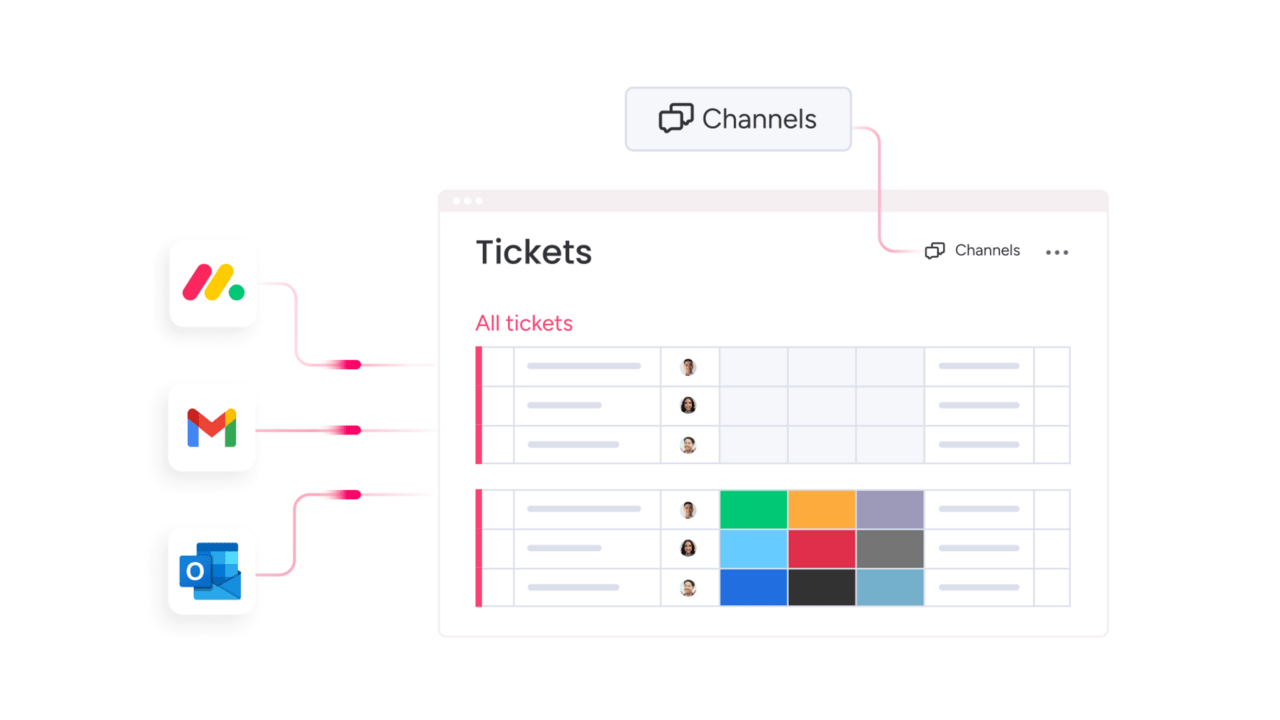
Demonstrate impact with real-time dashboards and metrics
Adoption is made easy when you use customizable dashboards to track what’s going on. With monday service, you can track ticket resolution times, team workloads, and progress toward change management milestones over time. And if things look out of step, change agents have the information they need to adjust their strategy in real time.
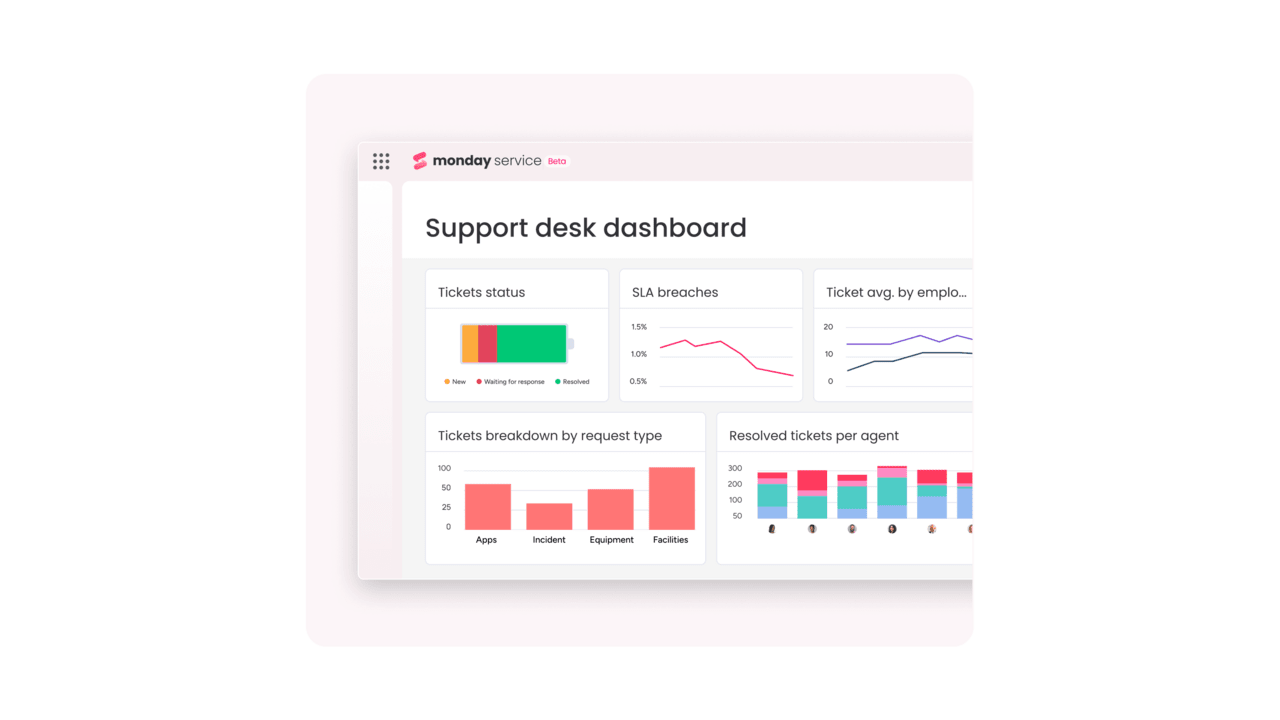
Keep everyone aligned with integrated communication tools
Effective change is impossible without strong communication. monday service keeps change effort conversations tied to the work by integrating with tools like Slack, Microsoft Teams, and Outlook. You can share updates, tag collaborators, and keep feedback loops open, without losing context or momentum.
Accelerate adoption with AI that understands what you need
monday service’s AI capabilities help change agents move faster and make sharper, data-backed decisions. You might use AI Blocks to categorize feedback, extract insights, or summarize team updates in seconds. And with monday sidekick, you get a built-in assistant that understands your role and helps you draft messages, outline next steps, and stay proactive, without leaving the platform.
Try monday service5 best practices for change agents
Change falls flat without the right approach. To help change take and stay rooted, effective change agents lean on a few tried-and-true practices that turn plans into progress.
1. Put in the prep work
Change initiatives often fail because teams jump into execution without fully understanding what they’re walking into. Preparation requires a deliberate foundation so change feels intentional, rather than chaotic. Here’s how to lay that groundwork:
- Map the current state: Before introducing something new, take time to understand what already exists. How do teams currently work? Which tools are in use? Where are the bottlenecks? This insight makes sure your change solves the right problems.
- Spot early warning signs: Resistance doesn’t emerge from nowhere. Look for signals like past failed initiatives, overburdened teams, and low morale that may indicate potential pushback. Knowing this in advance helps you plan around it.
- Build your internal network: Identify stakeholders, department leads, or team influencers who can act as early supporters. Get their input before anything goes live, and keep them involved as sounding boards during rollout.
2. Commit to training
The most well-designed change initiative will stall if people don’t feel equipped to navigate it. According to the monday.com world of work report, 60% of employees believe better training would help them embrace change. Effective training provides learning opportunities that cater for people at different levels of skill, comfort, and capacity. Consider building a multi-layered training approach that includes:
- Hands-on workshops: Live, interactive sessions where teams can practice new workflows in a low-stakes environment. These build muscle memory and boost confidence quickly.
Self-paced content: Written guides, videos, or tutorials are especially helpful for read-write or visual learners who prefer time to absorb and revisit material. - Microlearning modules: Short, focused lessons on specific features or tasks. They prevent information overload and support learners who thrive with small, digestible chunks.
- Peer-to-peer coaching: Sometimes the best training comes from knowledgeable colleagues. Identify early adopters or internal champions who can offer informal support or mentorship.
- On-demand help tools: In-app guides, embedded tooltips, or AI-powered assistants offer real-time assistance without disrupting the flow of work.
3. Communicate change properly
Clear, consistent communication is one of the most powerful tools a change agent has. Employees agree: 64% in the US and 53% in the UK place a high priority on clear communication during periods of change.
Great communication during change should be frequent, varied, and two-way. Consider using a mix of channels like the following:
- Slack or Teams announcements: Short, timely updates that keep momentum going and reduce the feeling of surprise.
- Q&A sessions: Offer a safe space, either virtual or in-person, for employees to ask questions and get honest answers from those leading the change.
- Town halls: Larger forums where leadership can share the broader vision and rally collective support.
- Focus groups: Smaller, targeted conversations to gather feedback and hear concerns.
- Email or intranet updates: Helpful for delivering clear, documented communications that people can reference later.
And don’t forget the human side of communication. Tone matters just as much as content, so be transparent and empathetic to reduce any change-fueled anxiety.
4. Welcome feedback (and listen to it)
Change is never a one-and-done effort, and it’s certainly not a monologue. Successful change agents know that feedback is a vital part of the change control process. When you invite people to share their thoughts, you do two things at once: you give employees a sense of ownership, and you gain insight into how the change is actually landing on the ground.
Here are a few effective ways to build structured feedback loops into your rollout plan.
- Pulse surveys: Short, frequent check-ins to gauge sentiment and spot early signs of friction or fatigue.
- 1:1 conversations: Especially useful for smaller teams or departments going through more complex changes.
- Team retrospectives: Reflective sessions to discuss what worked, what didn’t, and what should shift moving forward.
- Anonymous forms or suggestion boxes: For employees who might be hesitant to speak up publicly but still want to contribute.
But what matters most is acting on the gems of intel you extract from your people. If they’ve taken the time to share their experiences and concerns, they need to see that it leads to real adjustments. Even small changes in response to feedback can go a long way in building trust and momentum.
5. Monitor change over time
One of the most common mistakes in change management is treating go-live as the final milestone. Effective change agents keep a close eye on how things evolve. They track how teams use new systems, where drop-offs occur, and how outcomes compare to expectations.
Here are a few things worth monitoring post-rollout:
- Adoption rates: Are people actually using the new tool or following the new process?
- Engagement levels: Is usage consistent, or tapering off after initial interest?
- Operational outcomes: Are you seeing improvements in speed, accuracy, service delivery, or collaboration?
- Sentiment trends: Are employees becoming more confident and comfortable, or showing signs of resistance?
By checking in at 30, 60, and 90 days post-launch, you’ll have time to course-correct and reinforce adoption before change fatigue sets in. This also gives you the data you need to report back on ROI and make a case for future initiatives.
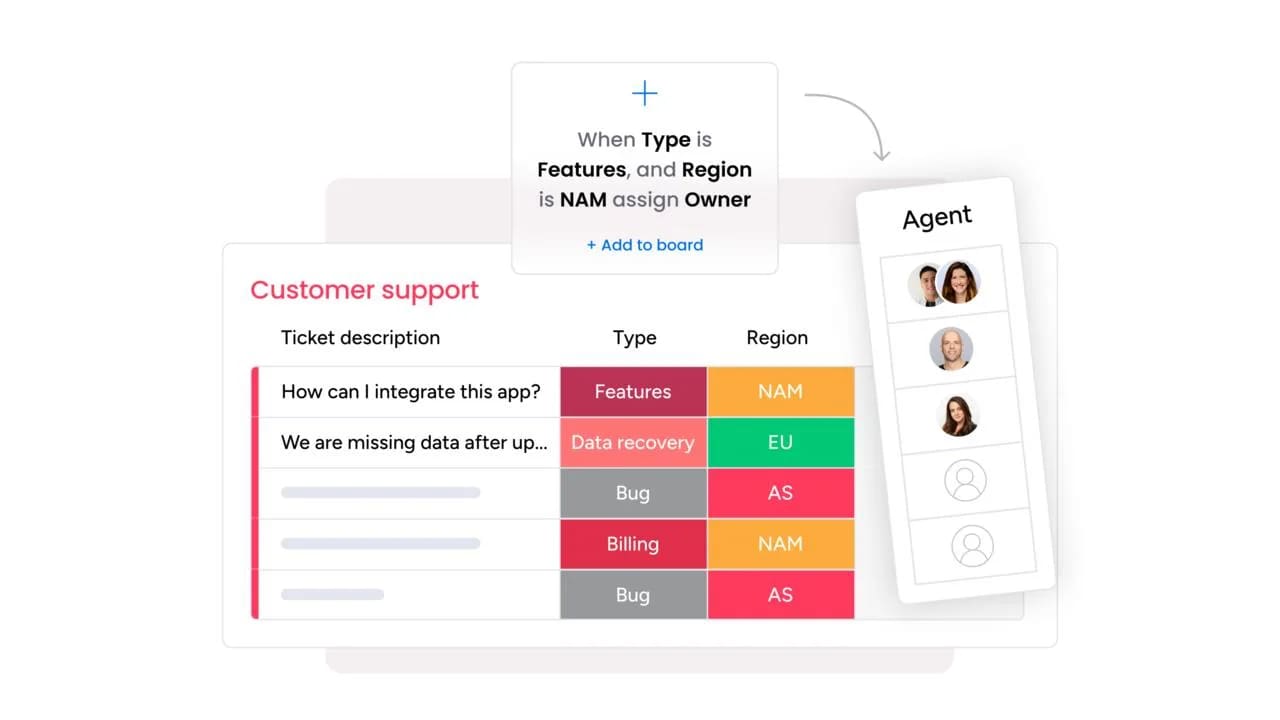
3 challenges for change agents to overcome
Driving meaningful change isn’t easy, and change agents often face barriers that go beyond logistics. Here are three common challenges you may experience.
Challenge 1: Resistance to change
Resistance is a natural human response to uncertainty, and it can show up in many forms, from passive disengagement to outright pushback. When employees don’t understand why something is changing or what’s expected of them, they’re less likely to participate meaningfully.
The solution is to prioritize communication; Shiran Nawi, Chief People and Legal Officer at monday.com, recommends, “Effective change management requires communicating the ‘why’ at every level.”
Challenge 2: Embedded processes
Existing systems, workflows, and habits are deeply ingrained in many organizations. Teams are used to doing things a certain way, and those routines are often tied to metrics, approvals, and cultural norms. Adi Dar, monday.com’s Chief Operations Officer, sees a strong link between willingness to change and company size.
In smaller companies, change is vital for growth and survival, and therefore becomes part of the culture. In the largest enterprise companies, change involves a vast workforce, where existing processes and systems are much more ingrained in the DNA.
To overcome this, change agents should take a phased, contextual approach. Start with low-friction changes and once you’ve secured those small wins, use them as proof points to justify more significant shifts.
Challenge 3: Lack of buy-in from leadership
Change needs champions at every level, but if executives aren’t aligned or actively involved, employees are less likely to prioritize the change or believe it will last.
This lack of executive sponsorship leads to under-resourced initiatives, unclear messaging, and fragmented ownership. It signals to teams that the change may not be worth the effort.
To fix this, change agents must engage leaders early and often. Use data to align the change with business goals and ask for active participation from your leaders.
3 real-world examples of change agents from industry leaders
Change agents work hard behind the scenes, but often they’re the public faces of transformation, too. Here are three leaders who played a direct role in driving organizational change at scale.
Howard Schultz, Starbucks
In 2008, during a sharp downturn in performance, Schultz returned as CEO to turn Starbucks around after an 8-year hiatus. He closed over 7,000 stores for a single day to retrain baristas, refocused the brand on customer experience, and introduced the My Starbucks Rewards program. His people-first approach led to a significant recovery; Starbucks’ stock price tripled between 2009 and 2012.
Reed Hastings, Netflix
Netflix’s co-founder and chairman has led Netflix through multiple transformations: from DVD rental (1997) to streaming (2007), and then into original content with Netflix Studios (2013). He’s championed a culture of innovation and radical transparency, even publishing the company’s famous Culture Deck in 2009. Under his leadership, Netflix has grown from 6.3 million subscribers in 2006 to over 300 million subscribers in 2025.
Satya Nadella, Microsoft
Since becoming CEO in 2014, Nadella has reshaped Microsoft’s internal culture and strategic direction, including the company’s pivot to cloud computing with Azure. In less than a decade, Microsoft’s market cap has risen from under $400 billion to $3.8 trillion in 2025, driven in part by this transformative leadership.
Support smarter change with monday service
Whether you’re leading a small internal rollout or a company-wide transformation at an enterprise company, monday service gives change agents the tools they need to succeed. From cross-department collaboration to workflow customization and built-in AI automation, the platform helps IT teams drive lasting change, with clarity, speed, and confidence.
Ready to support your next transformation? Get a free monday service trial and explore how it helps your team lead change that lasts.
Try monday serviceFAQs about change agents
What is a change agent in technology?
A change agent in technology is someone who drives the adoption of new tools, systems, or digital processes within an organization. They play a key role in IT transformation by guiding teams through tech-driven change, such as rolling out new platforms, upgrading infrastructure, or shifting to cloud-based solutions. Tech change agents help bridge the gap between technical implementation and employee adoption to ensure long-term success.
How does a change agent differ from a change leader or a change manager?
While all three roles support organizational transformation, their focus and influence levels differ.
- A change agent executes and enables change at a tactical level, often working across teams.
- A change leader sets the strategic vision for the change, typically from a senior leadership position.
- A change manager oversees the planning, rollout, and monitoring of a change initiative using structured methodologies.
How do change agents contribute to IT change management processes?
Change agents in IT make sure all technology initiatives are implemented smoothly and adopted effectively. They support communication between IT teams and end users, coordinate training efforts, and troubleshoot technical or process-related issues. And by translating complex changes into practical steps, they reduce resistance to change and improve long-term success rates for IT projects.
What strategies do change agents use to implement organizational change?
Effective change agents use several key strategies to implement change:
- Conducting stakeholder analysis to understand who’ll be impacted
- Creating targeted communication plans to explain the change clearly
- Providing ongoing training and support to build confidence and skill
- Gathering feedback to adjust the approach as needed
- Tracking adoption metrics to check the change is taking hold over time
